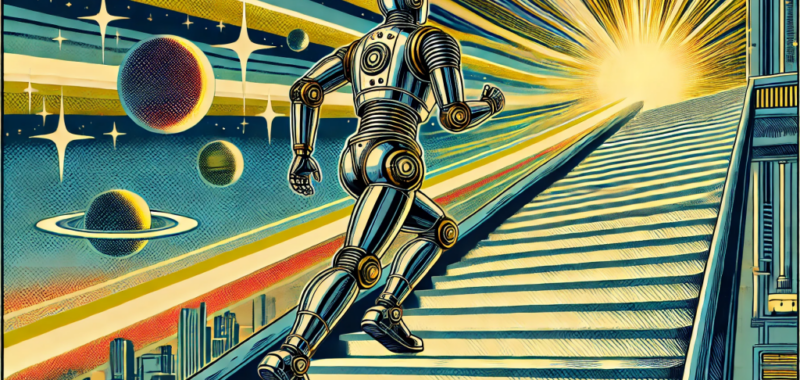Join our daily and weekly newsletters for the latest updates and exclusive content on industry-leading AI coverage. Learn More
OpenAI continues to push the envelope on generative AI. Yesterday, without much fanfare or warning, the company’s official ChatGPT account on the social network X posted an update stating: “there’s a new GPT-4o model out in ChatGPT since last week. hope you all are enjoying it and check it out if you haven’t! we think you’ll like it” followed by a smiley face emoji.
While the ChatGPT app account on X did not provide further information immediately following that post, sources at OpenAI told VentureBeat that the new model was updated based on user feedback.
Not a new reasoning style, despite user speculation
Intrepid users speculated the new GPT-4o model within ChatGPT was exhibiting step-by-step or multi-step reasoning and more detailed explanations of its processes to the user, delivered in natural language.
However, an OpenAI spokesperson told VentureBeat that there was not a new reasoning process in the model update, and that ChatGPT describing its reasoning could be triggered by a user’s specific prompt.
Prior to the announcement, users noted that the underlying model powering ChatGPT, OpenAI’s GPT-4o, seemed to be behaving differently and better than in the recent past.
Other users are reporting that GPT-4o’s native image generation capabilities through ChatGPT also appear to be activated.
Why is this a big deal, especially when ChatGPT could already generate images? Because ChatGPT, when powered by the prior GPT-4 model, relies on tapping OpenAI’s DALL-E 3 diffusion-based image generation model to create images based on user text prompts.
One of the big selling points and assets of GPT-4o when it was announced back in May was that it was trained to be natively multimodal, turning not just text but pixels into tokens, allowing it to generate imagery on its own in higher quality than DALL-E 3, faster, more efficiently, with greater comprehension of text prompts and more accurate and realistic generations of illustrated text within images.
Not everyone is pleased
Others have offered a more critical or even cynical take on the ChatGPT update, stating that OpenAI should do more to explain what’s changed from a model behavior and user experience standpoint.
Some even think the change is ultimately superficial or not hugely noticeable.
ChatGPT may be running a different version of GPT-4o than what’s in the API
Asked by VentureBeat about the update, an OpenAI spokesperson stated that: “We’re often making small improvements to our models in ChatGPT and the API. The ChatGPT variant may differ from what’s in the API as we always optimize for what’s best for developers in the variant we ship to the API.”
VentureBeat reported last week that OpenAI updated its GPT-4o model. GPT-4o powers ChatGPT as well as third-party developer apps through OpenAI’s application programming interface (API). However, based on the OpenAI spokesperson’s statement, it appears the GPT-4o version powering ChatGPT the consumer experience is separate from the GPT-4o version available to third-party developers through the API.
We’ve reached out for additional clarification on the latest ChatGPT update and will add more to this piece when we hear back.
Correction: Tuesday, August 13 at 4:11 pm ET: This piece originally stated in the headline and article text that the new OpenAI model exhibited step-by-step reasoning based on a user’s post on X. However, after speaking with OpenAI, the company denied this was the case. We have since updated the piece to reflect this as well as retained the original user tweet that inspired by the conclusion.
Source link

